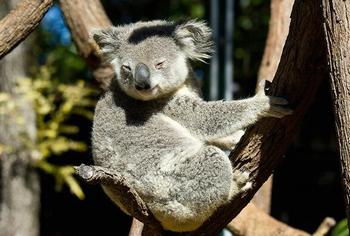
SYDNEY, Australia, September 19, 2012 (ENS) – The impact of climate change on Australia’s unique plants, animals and ecosystems will cause extinctions and lost ecosystem services and require new ways of thinking about biodiversity conservation, finds Australia’s national science agency.
Conducted by the Commonwealth Scientific and Industrial Research Organization, CSIRO, the study modeled 100 percent of Australia’s land mass and did detailed ecological analyses of four priority biomes, covering around 80 percent of Australia.

“Climate change is likely to start to transform some of Australia’s natural landscapes by 2030,” said lead researcher Dr. Michael Dunlop. “By 2070, the ecological impacts are likely to be very significant and widespread.”
“Many of the environments our plants and animals currently exist in will disappear from the continent,” he said. “Our grandchildren are likely to experience landscapes that are very different to the ones we have known.”
The CSIRO researchers analyzed in detail climate impacts and adaptation options in four biomes: hummock grasslands of the arid interior of Australia; tropical savanna woodlands and grasslands; temperate grasslands and grassy woodlands; and southeastern Australia’s sclerophyll forests, which are open eucalypt woodlands.
The study suggests the Australian community and scientists need to start a rethink of what it means to conserve biodiversity, as managing threatened species and stopping ecological change becomes increasingly difficult.
“We need to give biodiversity the greatest opportunity to adapt naturally in a changing and variable environment rather than trying to prevent ecological change,” Dr. Dunlop said.

Australia contains one million different native species. More than 80 percent of the country’s flowering plants, mammals, reptiles and frogs are unique to Australia, along with most of its freshwater fish and almost half of its birds.
But under pressure from habitat change, overexploitation, pollution, invasive alien species and climate change, Australia’s biodiversity is already in steep decline, possibly faster than anywhere else in the world.
Australia has the worst mammal extinction record in the world – 27 mammals have become extinct in the last 200 years.
In addition, more than 1,500 mammals, birds, reptiles, amphibians and plants are listed as threatened with extinction under federal legislation. The Australian government also has identified 3,000 ecosystems facing extinction.
Dr. Dunlop said climate change will magnify existing threats to biodiversity, such as habitat clearing, water extraction and invasive species.
Future climate-driven changes in agriculture, water supply and electricity supply, could add to the pressure on species and ecosystems.
“These other threats have reduced the ability of native species and ecosystems to cope with the impacts of climate change,” Dr. Dunlop said.

Before concerns about climate change, most conservation objectives were focused on preserving biodiversity as it is, or restoring it to some prior condition from a current degraded state, or at best allowing some fluctuation within defined bounds, the study says.
However, the study finds, climate change will “drive continual and directional changes in the genetics, abundance and distribution of many species and in the composition, structure and function of ecosystems.”
Although most of these changes will be “essentially unstoppable,” the study says, in some situations management may be able to have some influence on how the changes unfold and may be able to reduce some of the losses.
“This could need new expectations from the community, possibly new directions in conservation policy, and new science to guide management,” Dr. Dunlop said.
“To be effective we also need flexible strategies that can be implemented well ahead of the large-scale ecological change. It will probably be too late to respond once the ecological change is clearly apparent and widespread,” he said.
The study found the National Reserve System will continue to be an effective conservation tool under climate change, but conserving habitat on private land will be increasingly important to help species and ecosystems adapt.
“While fire per se is not a threat to most Australian biodiversity, altered fire regimes are likely to be a significant driver of ecological change and a potentially driver of additional human impact. Drying is likely to lead to longer fire seasons and more weather capable of supporting intense fires across much of Australia,” according to the CSIRO report.
The study was funded by the Australian Government Department of Sustainability, Environment, Water, Population and Communities, the Department of Climate Change and Energy Efficiency and the CSIRO Climate Adaptation Flagship.
Copyright Environment News Service (ENS) 2012. All rights reserved.
